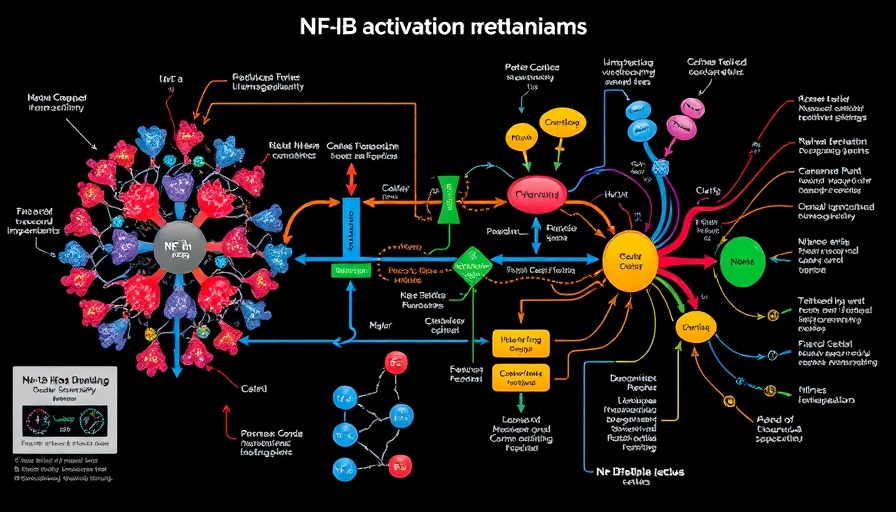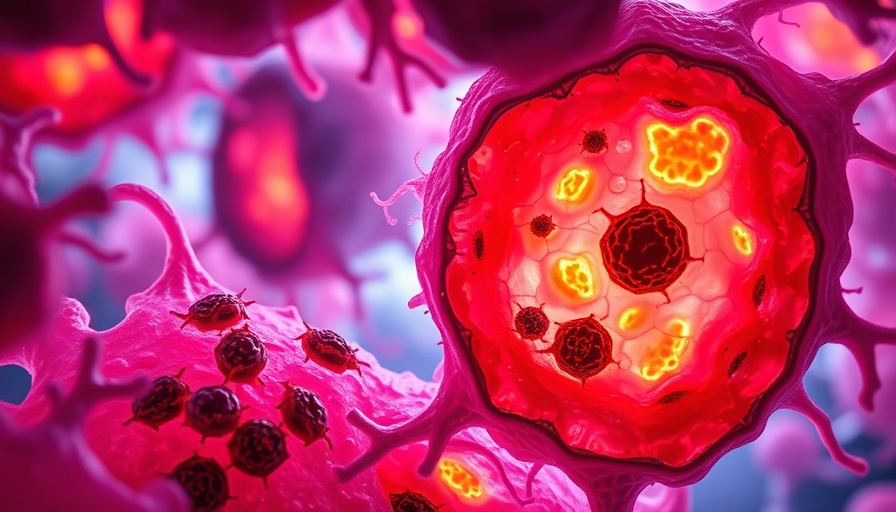
Understanding the Mechanisms of NF-κB Activation
In the intricate world of cellular health, DNA damage can lead to significant troubles within our body’s cellular machinery. New research delves into how two primary players—ATM (Ataxia Telangiectasia Mutated) and IRAK1 (Interleukin-1 Receptor-Associated Kinase 1)—orchestrate separate pathways for NF-κB (Nuclear Factor kappa-light-chain-enhancer of activated B cells) activation in response to DNA damage.
The Road to Longevity: Implications of NF-κB
Why should health-conscious folks care about this? NF-κB is a crucial transcription factor that activates genes involved in inflammation, cellular survival, and proliferation, which are fundamental in aging and longevity research. When our DNA encounters damage—which can come from various environmental stressors or even during normal cellular processes—understanding how NF-κB is activated could lead us to effective anti-aging strategies. As we learn more about cellular mechanisms, we inch closer to healthspan optimization.
Deciphering the Corrections: Why Do They Matter?
The recent correction highlighted in Nature Structural & Molecular Biology concerning the typographical error in Fig. 6c of the original study emphasizes the importance of precision in scientific communication. A seemingly minor mistake can alter our interpretation of critical data concerning cellular signaling pathways and underscore the need for intense scrutiny in health research.
Biochemical Battles: The Role of ATM and IRAK1
ATM, a guardian of the genome, detects DNA damage and initiates repair processes. In contrast, IRAK1 functions in the immune response. The activation of NF-κB by these two molecules reveals that our body employs sophisticated strategies to cope with cellular stress. This knowledge could help biohackers and wellness enthusiasts tailor their approaches to aging—prioritizing supplements that could support these pathways.
Connecting the Dots: Nutrition and Cellular Health
What does all this mean for your daily routine? Research indicates that adopting a healthy diet enriched with antioxidant-rich foods could mitigate DNA damage. Foods like berries, leafy greens, and nuts can lower oxidative stress, reduce inflammation, and, potentially, support the very pathways that ATM and IRAK1 are involved in. Consider this a delicious avenue towards longevity.
Future Predictions: What Lies Ahead in Aging Research?
As researchers continue dissecting these pathways, we might soon see new supplements or lifestyle changes focused on enhancing ATM and IRAK1 function. Imagine personalized health strategies that tweak your diet based on your unique genetic makeup, optimizing your body’s response to DNA damage. The future is bursting with possibilities driven by cutting-edge health research.
Accessible Science: The Joy of Understanding Longevity
For the average person, this research may seem distant, yet it informs everything from your daily choices to how health trends evolve. With the right insights—like those from studies on NF-κB—you can make empowered decisions about aging gracefully. Using science-backed health tips, you can participate in your own longevity journey.
Bridging Science and Everyday Health
In conclusion, while ATM and IRAK1 activate NF-κB through different mechanisms, the real takeaway here is about connection—connecting science with daily health practices and the broader conversation about aging. Recognizing the vital role of cellular processes guides us on our wellness journeys. With new findings emerging, there’s no reason not to stay updated!
Ready to embrace the findings of cellular health in your wellness journey? Subscribe to scientific journals, stay informed about the latest discoveries in aging research, and explore personalized health strategies that resonate with your lifestyle! It’s time to optimize health and longevity with both knowledge and action!
 Add Row
Add Row  Add
Add 




Write A Comment